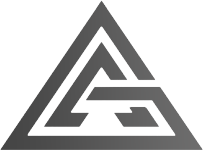Useful Terminology
Single sided bevels
From left to right.

Single Bevel – This is when there is just one angle making up the cutting edge. These can be on straight blades as well as circular blades.
Back Chisel – This is where you have a small and often very steep angle on the back of the cutting edge. These can sometimes be on blades that have the back edge running against an anvil, this reduces chipping of both the cutting blade and anvil.
Front Chisel – This is when the small steep angle is placed on the same face as the main bevel. A chisel will prevent chipping and increase cutting life.
Double bevels
From left to right.

Double Bevel – When there is a cutting edge on both sides of the blade, typically these will both be the same length and angle.
Chiseled Double Bevel – The same as a front chisel but the same on the front face and back face of the blade. Once again this is done to reduce chipping and increase life of the blade.
Land – Where there is a small often upto 1mm flat top at the end of the cutting edge. This is mainly used when the blades does not actually cut but is used in a lifting or seperating task. A land can also be used on single bevels as well.
Types of bores and circular knives (circs)
Clockwise from top.

Pin Hole – When there is an extra hole drilled through the blade that lines up with a pin on the blade hub. Pin holes may also be used as a way of holding the blade still while fitting them to the machine.
Keyways – A small cut out extenting from the bore which fits around the exposed key on the machines shaft. Keyways can take on several shapes but rounded keyways are less prone to cracking the blades then squared keyways.
Dished Circs – Where the blade is cupped either towards or away from the cutting edge. Having a dished blades gives a gap between where the cutting is happening and where it has happened.
Types of Holes
From left to right.

Slots – When the hole extends all the way to the bottom of the blade. This makes for easier fitting of the blades to the machine. The bolts do not need to be removed completely.
Elongated Holes – This is when two holes have been joined allowing for the blade to be adjusted as the blade wears and is resharpened.
Counter Bored – Where two holes are drilled with the same centres, resulting in a almost squared bottomed bolt location hole. These types of holes are used for socket head bolts.
Counter Sunk – Where there is a tappered hole leading into the main bolt location hole. Used when counter sunk bolts are used in the machine.
Curved Bevels
Top then Bottom.

Concave – Where the cutting edge curves into the blade forming a shape similar to that of a cave.
Convex – This is the opposite of concave and where the cutting edge is curved away from the rest of the blade.
Some blades can use both convex and concaved bevels in this cases it is refered to as having a spinled bevel.
Perforations
From left to right.

Perforated – When the teeth all have straight angular sides. There is normally one bevel placed on both sides of the teeth and the an extra bevel places on the face of the blade.
Scolloped – Where the teeth have rounded or curved sides. Once again like perforated each tooth will generally have its own bevel then an extra bevel placed on the face of the blade.

